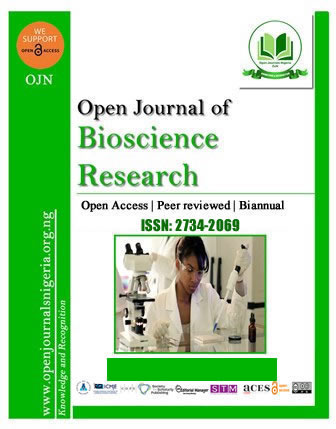ACUTE TOXICITY EVALUATION AND ANTIDIABETIC EFFICACY OF SENNA SIAMEA LAM. METHANOL LEAF EXTRACT IN MICE
DOI:
https://doi.org/10.52417/ojbr.v3i1.376Keywords:
Alloxan, Diabetes mellitus, Senna siamea, PhytochemicalsAbstract
Senna siamea Lam Irwin et Barneby is used as a medicinal plant especially its leaf, fruit, and stem bark. In this work, the leaf of Senna siamea was extracted using 85 % methanol by maceration method, screened, and investigated for phytochemical constituents, acute toxicity was evaluated using Lorke’s method and an antidiabetic study was carried out using alloxan-induced Wistar mice. The result of the phytochemical screening revealed the presence of carbohydrates, tannins, saponins, steroid/terpenes, terpenoids, cardenolides and alkaloids, while phlorotannins and soluble starch were absent. The acute toxicity study revealed no death was recorded on the administration of 10, 100 and 1000 mg/kg dose of the leaf methanol extracts via both the oral and intraperitoneal routes in phase I. But death was recorded in phase two, when an extract dose of 5000 mg/kg of the leaf extracts was administered intraperitoneally. Thus, LD50 of the leaf extracts in rats administered via the oral route was ≥5000 mg/kg while the intraperitoneal route was calculated as 3807 mg/kg. The antidiabetic study revealed that the extract at doses of 200 mg/kg and 400 mg/kg bd.wt produced a significant (p<0.05) reduction in the fasting blood glucose (FBG) of the animals with reductions of 61.01 % and 34.84 % respectively, while both the negative and positive controls had 00.00 % and 76.68 %. The result shows that the effect of the extract was not dose-dependent since the extract of 200 mg/kg exerted a more significant antidiabetic effect on the mice. Thus, the study justified the traditional use of the plant for the management of diabetes.
Published
How to Cite
Issue
Section
Copyright (c) 2022 Yakubu et al.,

This work is licensed under a Creative Commons Attribution 4.0 International License.





















